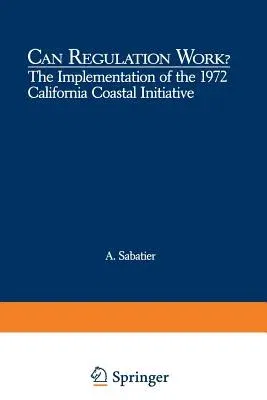Daniel A Sabatier
(Author)Can Regulation Work?: The Implementation of the 1972 California Coastal Initiative (Softcover Reprint of the Original 1st 1983)Paperback - Softcover Reprint of the Original 1st 1983, 25 November 2012

Qty
1
Turbo
Ships in 2 - 3 days
In Stock
Free Delivery
Cash on Delivery
15 Days
Free Returns
Secure Checkout
Part of Series
Environment, Development and Public Policy: Environmental Po
Print Length
389 pages
Language
English
Publisher
Springer
Date Published
25 Nov 2012
ISBN-10
1468411578
ISBN-13
9781468411577
Description
Product Details
Author:
Book Edition:
Softcover Reprint of the Original 1st 1983
Book Format:
Paperback
Country of Origin:
NL
Date Published:
25 November 2012
Dimensions:
22.86 x
15.24 x
2.11 cm
ISBN-10:
1468411578
ISBN-13:
9781468411577
Language:
English
Location:
New York, NY
Pages:
389
Publisher:
Weight:
539.77 gm

